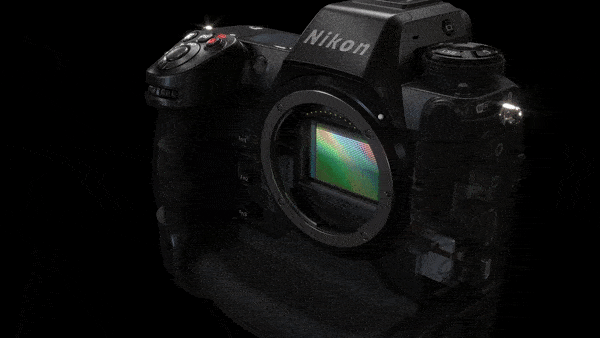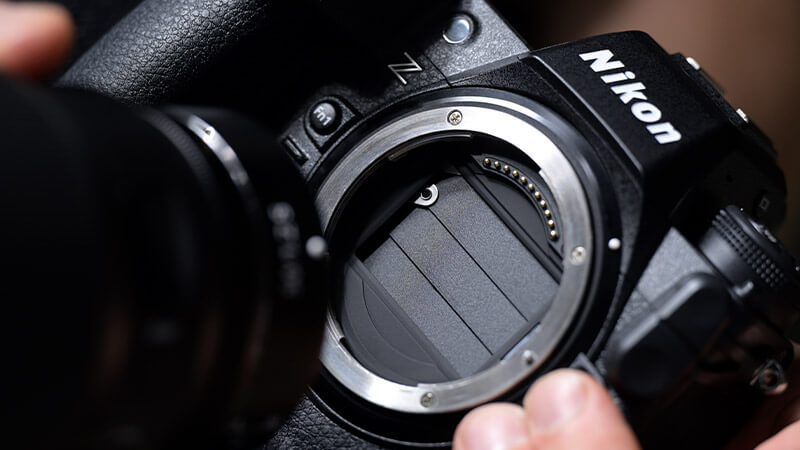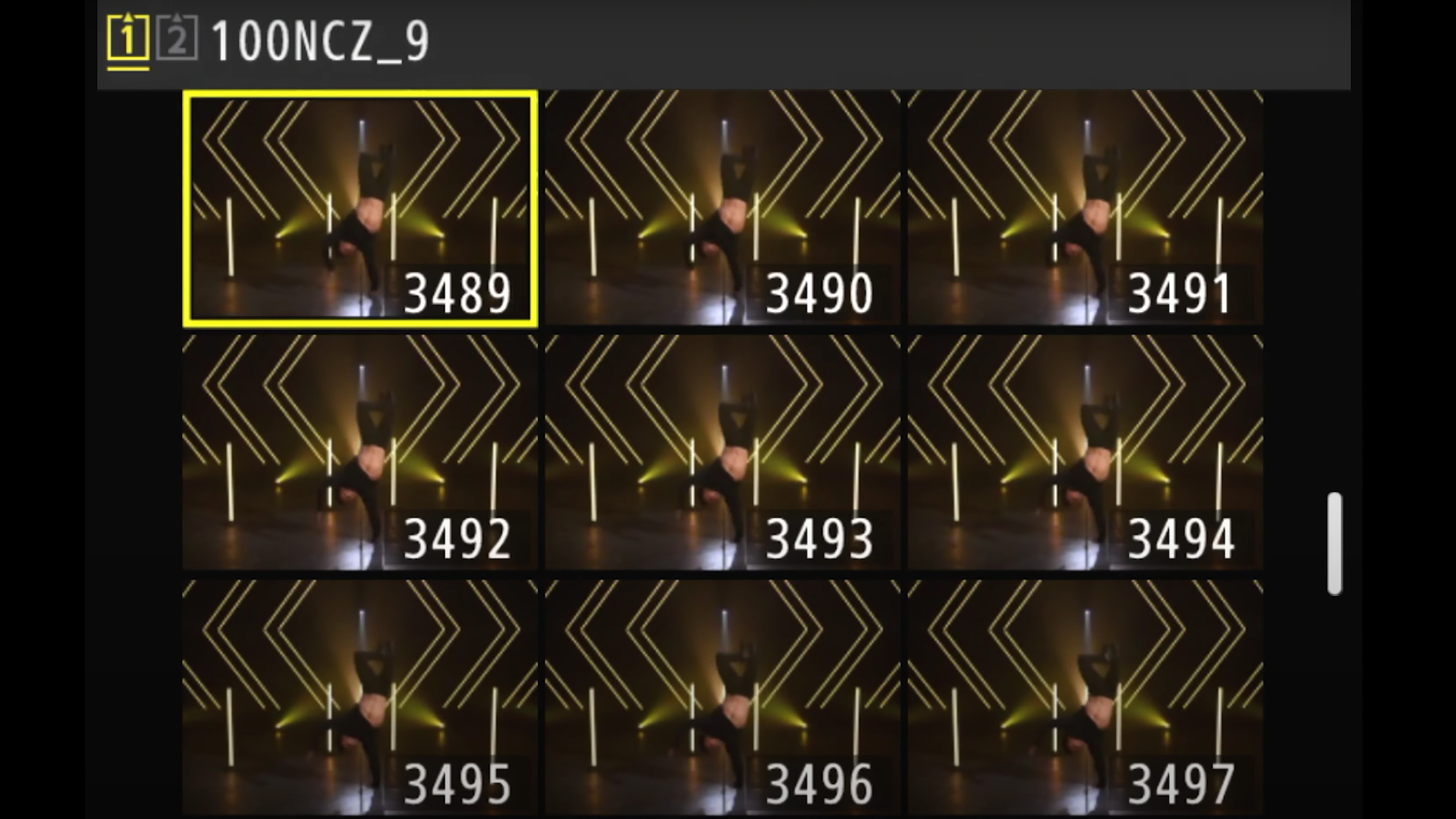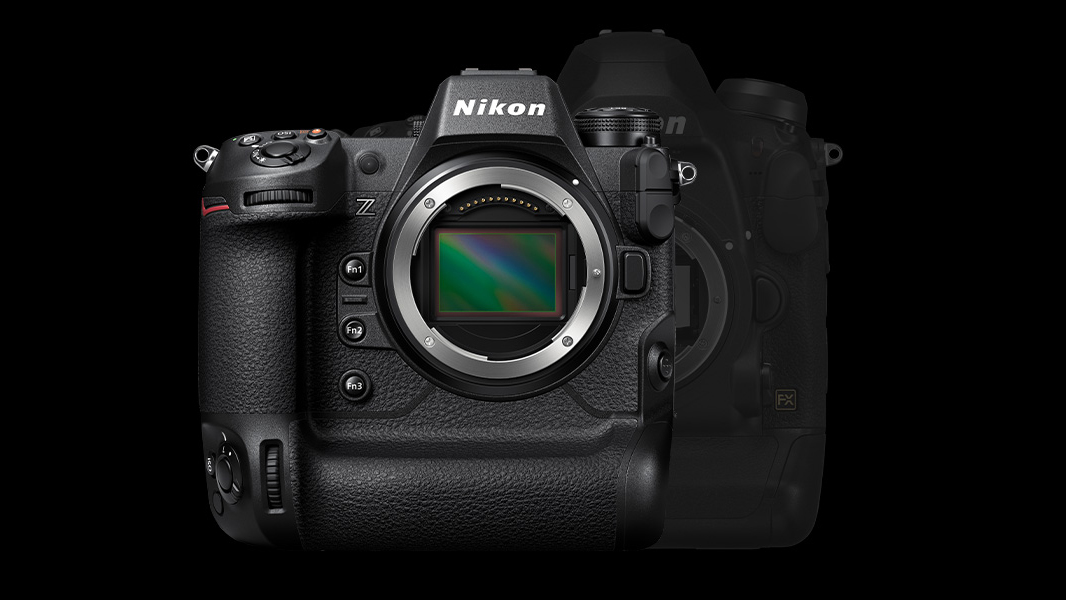The Nikon Z9 is the company's most powerful camera yet, competing with the Canon EOS R3 and Sony A1 for the full-frame mirrorless camera crown. It's a camera that has it all; 45.7MP stacked sensor, 20fps bursts with continuous 3D tracking AF and unlimited JPEG buffer, plus 8K video recording. Yet there's one thing the Z9 doesn't have – a mechanical shutter.
For all its razzle and dazzle, we're particularly intrigued by the Z9's sole reliance on an electronic shutter. After all, other mirrorless and DSLR cameras (barring video-centric models like the Sigma FP) all include both mechanical and electronic shutter types. Is this an inspired and progressive design choice, or a potential catastrophic error?

To find out, we spoke to Nikon's product specialist Dirk Jasper and quizzed him about why Nikon's so confident in the Z9's new tech and what it means for the future of both shutter design and cameras.
Before we find out if the Z9 really does spell the beginning of the end for mechanical shutter, though, let's unpack what camera shutters are for and why most cameras pair them with an electronic shutter.
Curtain raiser
What exactly is a mechanical shutter? In a digital cameras, it both protects the image sensor and opens to accept light and create your photographs.
Originally used in film cameras, then DSLRs and mirrorless models, there are two main types of mechanical shutter; focal plane and leaf. A focal plane shutter has two metal 'curtains' that allow and exclude light, while leaf shutters have a circular arrangement of overlapping blades with the less 'aggressive' shutter action of the two.

Most cameras also feature an electronic shutter, which has no moving parts but instead 'turns on and off' for image capture. This shutter type can be used for both photography and video. Until now, both mechanical and electronic shutters have featured in most digital cameras, but the Nikon Z9 is the first pro camera to go electronic-only. So why has Nikon done it?
By removing the shutter, we also remove a piece of the system that can be a life-limiting factor and needs expensive repair or re-adjustment in case of failure.
Dirk Jasper, Nikon
The obvious answer is because it can. As Dirk Jasper told us "The Z9's sensor design and the supporting processing via Expeed 7 allow for the first time to have a mirrorless camera without the need for a mechanical shutter. By removing the shutter, we can enable technologies not being possible by using a mechanical curtain in front of the sensor," he said. As always, there's a bit more to it than that.
Mechanical vs electronic
More on the those 'technologies' later, but first let's dig into the relative strengths of mechanical and electronic shutters. As its name suggests, a mechanical shutter features moving parts and therefore its performance is limited.
Its shutter speeds max out at 1/8000sec, while frame rates appear to have peaked at 16fps, as seen in the Canon EOS 1DX Mark III. There's also an audible sound and vibration during shutter-action, plus a shutter-action life expectancy. That said, only the most trigger happy image makers are likely to wear out a shutter and incur a costly replacement.

An electronic shutter trumps a mechanical shutter performance with faster maximum shutter speeds up to 1/32,000sec and lightning-fast frame rates like the 120fps we're seeing in cameras like the Z9. Another bonus is that the shutter action is vibration-free and can be silent – a dream for the likes of landscape, street and wedding photographers. All sounds promising, right? Well it's not all a one-way street, especially for freezing high-speed movement.
Nikon told us the Z9's scan rate is approximately 12x faster than that of the Nikon Z7 II. That's some serious power in its stacked sensor.
Unlike a mechanical shutter, where the whole image is frozen simultaneously, an electronic shutter 'reads' image data line by line onto the sensor – a process that's documented to typically take around 1/200sec and is otherwise known as 'rolling shutter'. Any action at higher speeds can display an adverse impact of rolling shutter. For example, you might have seen action images of warped golf clubs during a swing, oval-shaped balls in flight and curved airplane propellors in rotation.
Along with movement distortion, rolling shutter can also suffer from an ugly effect called 'banding' (light-dark-light-dark) when using flash or under high-frequency 'flickering' artificial lights.
Why now?
Most cameras let you choose the right shutter for your shooting situation. Freezing action or using flash? Go mechanical! Shooting landscapes and need your camera as steady as possible? Electronic shutter all the way! But the Nikon Z9 is a camera made for action that is relying entirely on an electronic shutter, so what's changed?
As you might expect, it's partly about speed. Nikon cites a combination of the Z9's new 45.7MP 'stacked' CMOS sensor, Expeed 7 processor and support for high-performance CFexpress Type B memory cards.
"The read-out speed of the sensor is the most relevant factor here," says Dirk. "Managing a high data flow at high speeds then also needs to be supported by the processing engine, which makes sure that all information is digitized and put away on a performant memory card at a scale that ensures the system keeps with the speed of new data coming in, be it high frame-rate shooting or high resolution video recording."

Indeed, Nikon told us that the Z9's scan rate is approximately 12× faster than that of the Nikon Z7 II. This means it exhibits roughly 1/12th the amount of rolling shutter distortion as the Z 7II. That's some serious power in its stacked sensor.
If the Z7 II has a typical rolling shutter speed, then 12x that speed essentially means that there are no scenarios that the Z9 will exhibit rolling shutter distortion. The early signs are promising. During our full review of the Nikon Z9 (coming soon), we used the camera in a variety of high-speed scenarios and have not experienced rolling shutter so far.
Scaling factors induced by production cost will definitely impact how much we will be able to have this spread to more models in the future.
Dirk Jasper, Nikon
That doesn't mean there aren't some small teething problems. "We have received rare reports where users report minor banding under very specific conditions," says Dirk Jasper. "We are looking into ways how to counter these effects automatically and will try to rectify them via firmware update. These effects can be easily avoided by a slight change of the shutter speed," he added.
Shutter priorities
Nikon could have kept a mechanical shutter in the Z9 as a failsafe, even if it doesn't get used at all. But another benefit of removing it is simplicity and durability.
"A mechanical element is always a restriction by design and also a potential breaking point." explains Dirk Jasper. "For higher-end cameras, Nikon always communicated the life expectancy of shutter as part of the product information. By removing the shutter, we also remove a piece of the system that can be a life-limiting factor for the device and needs expensive repair and re-adjustment in case of failure."

So, does this mean that all cameras will soon go electronic-only? Not necessarily. Dirk gives us a glimpse. "At Nikon we have always lived a philosophy of what we call 'technology transfer'. All new technology will eventually trickle down through our line-up as long as it is feasible and also possible to implement in terms of cost."
But it's likely to remain a high-end feature for now. "Other than with firmware driven changes, the use of a purely mechanical shutter in cameras is definitely connected to processing power and the sensor hardware, which come at a cost," he explains. "Therefore scaling factors induced by production cost will definitely impact how much we will be able to have this spread to more models in the future."
So, it seems for now that only the expensive flagship cameras can afford to offer us a mechanical shutter-'less' design. But one thing's for sure – the new power behind the Z9 paves the way for revolutionary camera design changes.
- Read our hands-on Nikon Z9 review
from TechRadar - All the latest technology news https://ift.tt/qPeNyou